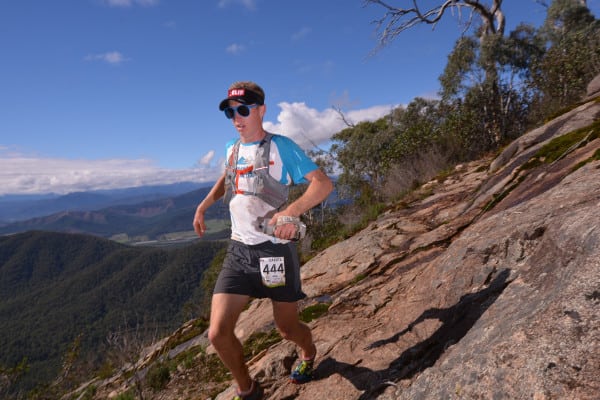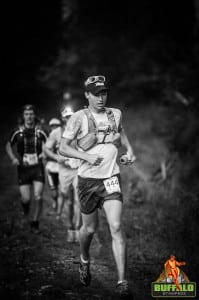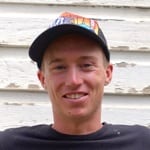Running in Australia is different from the U.S. or Europe. Specifically, Australia is mostly flat desert. That’s not to say that such a landscape is a bad thing, but for mountain-running purposes Australia is rather sparse. But it’s not completely devoid of potential. In the southeastern corner of the country, between its two largest cities–Sydney and Melbourne, which together comprise 9.1 million of Australia’s 23 million total people–are the Victorian Alps. If you’re like me, upon hearing that name you recall striking Romantic imagery of the Victorian period in the European Alps. But in fact the name is referring to the ‘Alps’ mountain range in Victoria, which is a state in Australia. But maybe I’m getting ahead of myself.
The word ‘Australia’ comes from the Latin word for ‘southern.’ The continent was first discovered by westerners in the 17th century by a Dutch ship which landed on its northern shores. But that’s hardly remarkable given that the country has probably been inhabited for 48,000 years by Aboriginal tribes likely stemming from Southeast Asia. Today the western culture has thrived while only the Aboriginal names seem to have remained. The Aboriginals themselves seem to have largely confined themselves to… somewhere else. Indeed, during our entire three-week stay we didn’t see a single Aboriginal, but my mouth was constantly stumbling over place names like ‘Yackandandah’ and ‘Wagga Wagga.’ Even kangaroos got their name from an Aboriginal phrase. But their own footsteps through the mountains seem to have faded from memory.
Growing up in the United States, I’m naturally inclined to think that any buildings or cities older than 200 years are ancient. Of course, 200 years is laughably young by European standards, but Australia is something else entirely. It was only settled by westerners in the late 18th century, by which point the United States had spent several centuries chafing under a multitude of abuses that ultimately culminated in secession from England. England colonized Australia too, but they used it as a penal colony for some time before actually incorporating it as a legitimate territory of its own. This latter point confused me, since I couldn’t imagine that England simply loaded a bunch of convicts onto boats for several months and then just set them loose in the wilderness. Surely there was some kind of ‘respectable’ institution that imprisoned and fed and worked them? And there was, first north of Sydney, then in Sydney, and then, oddly, Tasmania, then Melbourne and steadily the expansion worked its way around the coast and into the interior. Over time the convict boats dwindled while the ‘respectable’ institutions grew, and by the early 19th century Australia had a thriving economy all its own.
The continent’s largest mountains are the Victorian Alps between Sydney and Melbourne. This is where the contiguous landmass’s highest peak is–Mount Kosciuszko at a casual 7,310 feet above the ocean. I say ‘contiguous landmass’ because it is a point of some contention among mountain climbers who try to climb the highest peaks on each continent; geologically, the highest peaks on the Australian continent are the 16,000-plus-feet peaks in New Guinea. But they are difficult to find, reach, and climb, so many people simply opt for the Kosciuszko walk-up. Within these southern Alps (though not the Southern Alps, which you’ll find across the water in neighboring New Zealand) are lots of small communities that originated in the gold rush of the 1850’s and persisted to this day with mining, forestry, farming, and now tourism to support them. Among these, the town of Bright along the meandering Ovens River was our destination.
Bright is Norman Rockwell quaint. It is 1950’s small-town-America peaceful. It’s the kind of town where you know everyone and you get the latest gossip out front of the ‘greengrocer’s.’ Bright has a milkman and an old-timey candy store. It’s fucking perfect. But Bright also has a thriving sports community. Road cycling is especially popular in the area and the mountains in all direction feature world-class climbs on well-maintained roads. Kayakers run the Ovens River, navigating around fly-fishermen while paragliders float through the air. The bird-watching is world class, if you’re into that, and I can personally vouch that the area is home to both kangaroos and wallabies. And lately running has come to town. Mountain running.
Naturally the first Australian Skyrace (as in, the venerated and until-recently-Europe-centric Skyrunning Federation) would be in the Victorian Alps. And Bright was a prime candidate because of its proximity to mountains and general acceptance of outdoor sports. And from what I can tell, the course sort of designed itself. Marcus Warner, co-founder of Ultra 168.com and overall man-about-town, worked with Sydney-area organizer Sean Greenhill to create a course worthy of the Skyrunning theme, which is another way of saying they did their best to create the most absurdly difficult course possible. The result was the Buffalo Stampede Ultra SkyMarathon, which was held for the first time on April 5 and 6.
The ‘Buffalo’ part comes from Mount Buffalo, which is a nearby chunk of rock that apparently resembled a sleeping buffalo to some likely sleep- and food-deprived explorer. It is a great plateau rising over one thousand meters (3,300 feet!) above the Ovens Valley. It is also one of Australia’s oldest national parks, having been set aside in 1898. Like most protected natural areas in Australia (and the U.S. too), it features a road to the top and several campgrounds and buildings scattered around, as well as a multitude of trails. One of these trails–creatively named ‘Big Walk’–was the race’s biggest climb.
But the race needed more than Mount Buffalo to complete its distance of 75 kilometers, so the race organizers got creative. They started the race in downtown Bright and ran it all the way to the top of Buffalo and back, along the way including three other major climbs: Mystic, Clear Spot (once again, brilliantly named), and Keatings Ridge. The latter, at ‘only’ 300 meters vertical, was small enough to be passed over for the King of the Mountain competition. The KotM, as it was affectionately abbreviated by those of us with only enough time to pronounce four syllables, was a race within the race: each runner was timed from the base to the summit of the climbs to Mystic (500-plus meters vertical), Clear Spot (also 500-plus meters vert), and Mount Buffalo (over 1,000 meters vert). At the end, these times were tallied up and the runner with the lowest combined time won $1,500. The hardest part was that once the runners did all this running up and down mountains to the top of Mount Buffalo, they then had to turn around and do it all again. Yeah, it was an out-and-back, and that meant that every meter climbed on the way out had to be repeated on the way back. In total, that added up to 4,545 meters of vertical total. If Google is to believed, that’s 14,911.42 feet.
That’s what the numbers look like for a Skyrunning race in Australia. But what does it really mean, on a level that one can actually feel and relate to? I don’t know. Honestly, don’t ask me hard questions. I couldn’t put my race experience into words that would clarify any of this. My race began with an easy climb up Mystic with a front pack that included many local (as in, Australian and Kiwi) guys you’ve probably heard of like Mick Donges, Brendan Davies, and Grant Guise, as well as a few guys you’re about to hear a lot more of, like Blake Hose. Then everybody started really racing and we powered up the climb to Clear Spot and down into the next valley. I should mention that on most of this section the ‘trail’ was either singletrack or just straight-up mountainside. Extensive logging in the area has created a network of apocalyptically steep trails that go from point A to point B as quick–literally!–as is possible on the terrain. Straight lines up near-vertical slopes are common. Between kilometers 13 and 25 the course was generally runnable dirt road, but at Eurobin Creek the course bent upward into the Big Walk climb that really defined the competition at the front. I had been running with some guys from Queensland up to that point (Queensland is an Australian state well north of Bright, and includes the towns of Gold Coast and Brisbane, which you may have heard of), but knowing that the climb up Mount Buffalo was the final climb on the KotM series, I ditched any extra weight and gunned it. By the time I reached the top I was still in first place, but I spent nearly two minutes at the aid station catching up on water. Looking back across the valley and what I still had to traverse was scary, so I simply stopped looking and kept running.
The course ran a little loop on the top of Mount Buffalo that included some pretty wild scrambles through confusing, wet and somewhat dangerous caverns that I was certain were hiding snakes. But soon enough I started back the way I had come, knowing what was ahead and fearing what was behind. The mind is an incredible motivator if harnessed right. I tend to adopt a mentality of constant uncertainty when racing, because then I’m less likely to fall victim to the ultimate flaw–complacency. I didn’t know who was behind me or how close, but I ran like they were breathing down my neck the whole time.
The only thing that got me over the last two climbs was experience. They finished me. Seriously, I absolutely buried myself getting over them. All I knew was that the finish line lay somewhere beyond them, and even having run so many ultras before now, I still doubted at times whether I could make it. The hike up to Clear Spot was as difficult as anything I’ve run in Europe or the U.S. Before the race I had looked at the race profile and considered that I had run comparable courses before–San Juan Solstice, Transvulcania, Cavalls del Vent–but something was different at the Buffalo Stampede. It could have been my fitness, but I don’t think so. I think it was something else entirely.
Australia is a deceiving landscape. It is harsh in unexpected ways. Even in the undeniably lush landscapes of the Victorian Alps one can be surprised by intense heat or cold at any time of the year. But that’s normal for mountain ranges the world over. In Australia I thought the landscape was pretty, but not daunting. Quaint, but certainly not intimidating. But when I actually ran through the ‘bush,’ as they hilariously call it, I found it much more difficult than I could have believed. What the area lacked in tall, craggy peaks it more than made up for in sheer audacious toughness, in an ancient impassibility, in pure geologic oomph. Australia was much more than it looked, much more than I remember, much more than I could possibly have discerned in a three-week trip.

Dakota Jones on his way to the Buffalo Stampede Ultra SkyMarathon win. Photo: Ultra168.com and Aurora Images
I won the race, but I didn’t feel triumphant. I just felt glad to be done, and unexpectedly proud to have completed a run so surprisingly difficult. The European Alps are striking for being so dramatic, the Rockies in the U.S. for being so wild. The Australian landscape is unlike anywhere else in the world for a lot of reasons that can only be glimpsed, as if peripherally, by actually being among them. The landscape felt as if rooted in a primeval splendor; a slumbering source of ancient strength waiting patiently until its time comes to uproot. My lasting impression is that I couldn’t say anything for sure about the Australia because it was deeper and older and stronger than I could comprehend.
Call for Comments (from Meghan)
- Okay, Aussies, now that you’ve read Dakota’s thoughts on Skyrunning in your neck of the woods, we’d love to hear your feedback.
- Did you race the Buffalo Stampede? Which distance and how did the race go for you?

